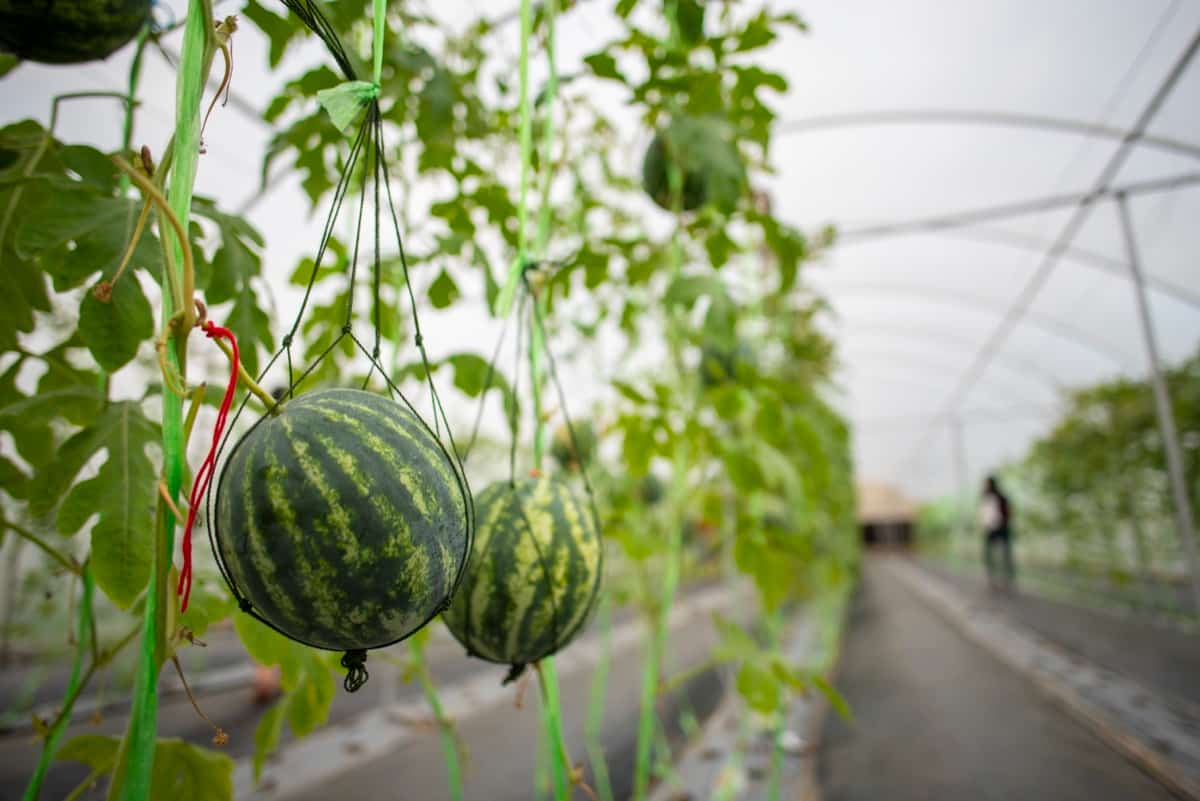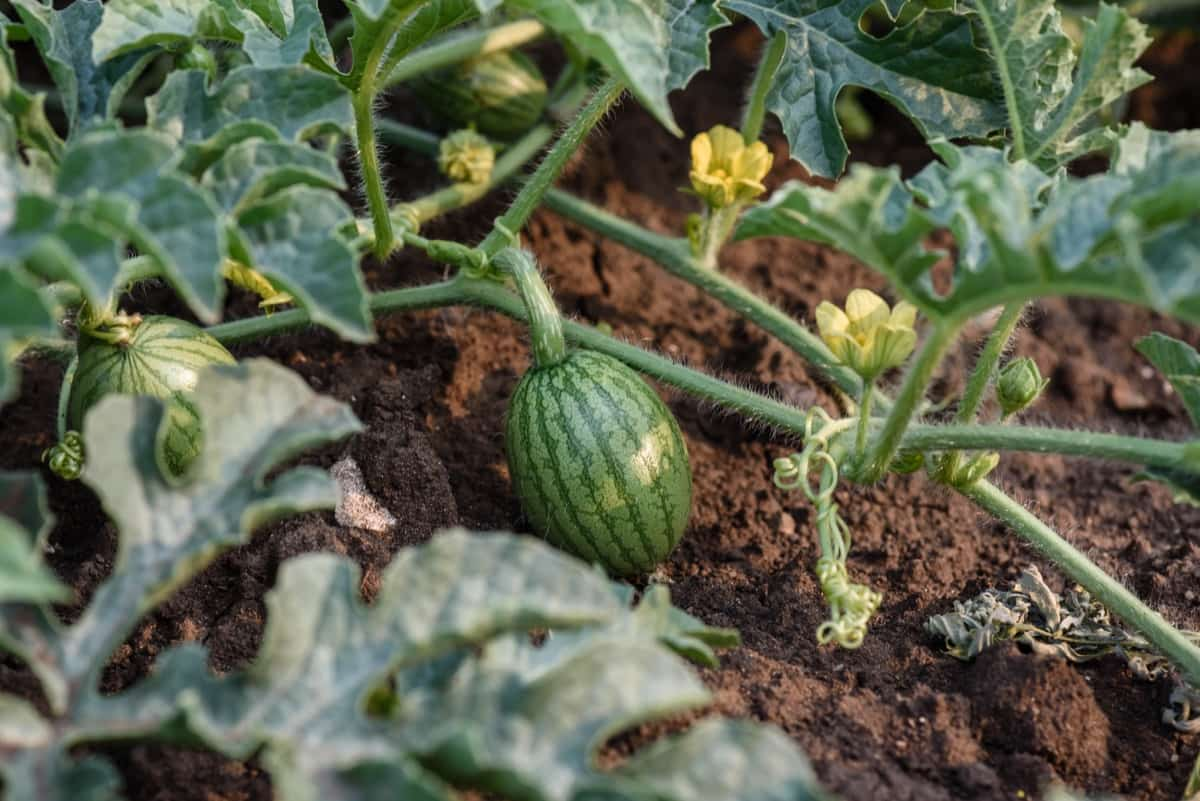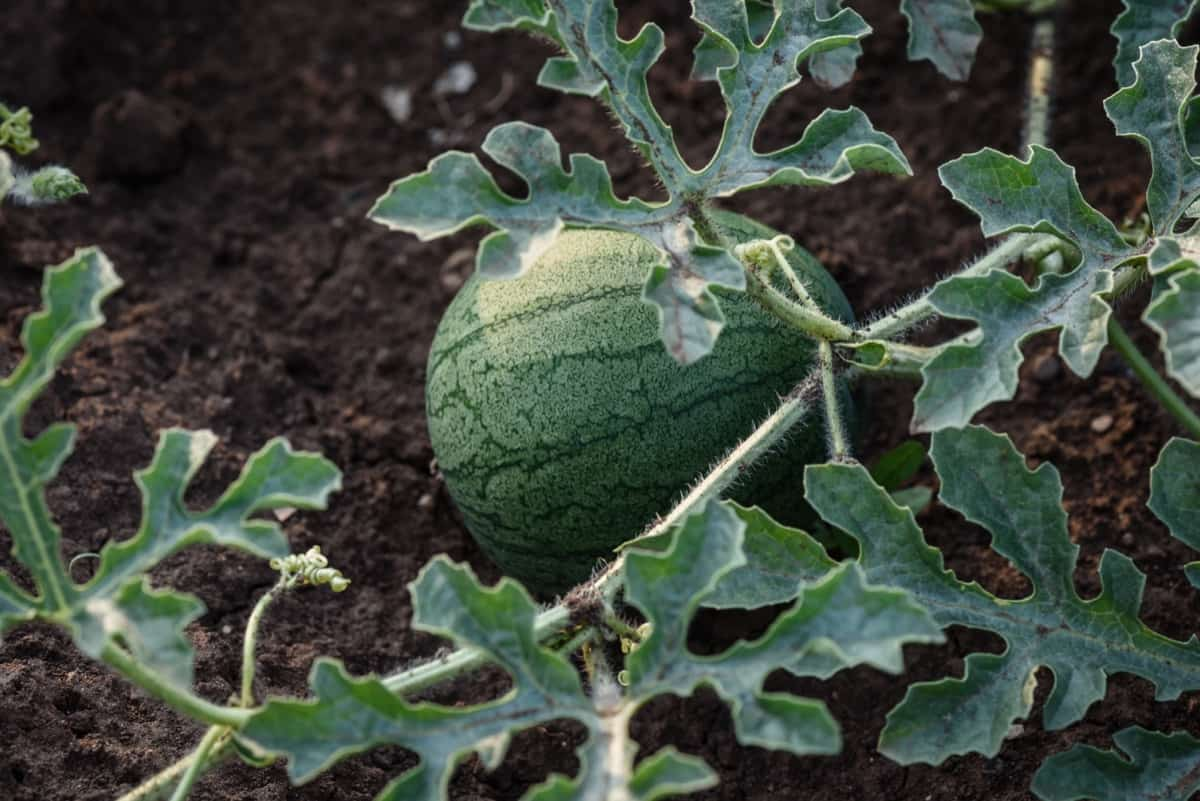Watermelons are a delicious and refreshing treat but are also susceptible to various pests that can damage or even destroy your crop. Fortunately, you can use natural and organic methods to control watermelon pests and protect your harvest. This guide will explore effective strategies for keeping your watermelon plants healthy and free from pests without using chemical pesticides.

How to Control Watermelon Pests Naturally
Watermelon Pests: Identifying the Most Common Pests and Their Impact on Your Crop
Watermelon crops can be vulnerable to various pests, including aphids, Red pumpkin beetles, and spider mites. These pests can inflict damage by feeding on leaves, stems, and fruits, reducing yield and quality. Aphids, for instance, weaken plants by sucking sap, while cucumber beetles transmit bacterial wilt. Spider mites cause stippling and webbing on leaves. Identifying these pests early is crucial for effective management.
Using Neem Oil to Control Watermelon Pests: A Safe and Effective Method
Neem oil is a natural and safe option for controlling watermelon pests. It disrupts the feeding and reproductive cycles of pests like aphids, spider mites, and whiteflies. To use neem oil, dilute it per the package instructions and apply it to the foliage, ensuring thorough coverage. Repeat every 7-14 days or as needed. Neem oil is non-toxic to humans and most beneficial insects, making it eco-friendly. However, following application guidelines and considering the environmental impact of pest control methods to maintain a healthy and thriving watermelon crop is essential.
In case you missed it: How to Control Onion Pests Naturally: How to Get Rid of Them with Natural and Organic Treatment

The Role of Beneficial Insects in Controlling Watermelon Pests: Introduction of Predatory Insects
Beneficial insects are crucial in maintaining ecological balance within the watermelon cultivation ecosystem. These insects, often referred to as predatory or beneficial insects, are natural enemies of common watermelon pests. By preying on or parasitizing these pests, they help suppress infestations, reduce the need for chemical pesticides, and promote healthier and more sustainable watermelon crops.
One of the most well-known beneficial insects is the ladybug, which voraciously consumes aphids, a common watermelon pest. Similarly, parasitoid wasps lay their eggs in or on the bodies of pests like cucumber beetles and caterpillars, effectively eliminating them. Ground beetles, lacewings, and praying mantises are valuable allies in pest control, feeding on various insect pests that can damage watermelon plants.
Introducing and conserving these beneficial insects in watermelon fields can be achieved through various strategies. Planting cover crops and providing diverse flowering plants can attract and support them. Reducing broad-spectrum pesticides that harm both pests and beneficial insects is also crucial. Understanding and harnessing the power of these natural predators is both environmentally friendly and economically beneficial, as it contributes to higher crop yields and reduced pest management costs in watermelon farming.
Companion Planting: How Planting Certain Plants Together Can Deter Watermelon Pests
Companion planting is a time-tested gardening strategy that involves planting certain plants together to enhance each other’s growth and protection. Specific companion plants can help deter common pests in watermelon cultivation, reducing the need for chemical pesticides. For example, planting basil alongside watermelons can help repel aphids, known to damage plants by feeding on their sap. Marigolds are another excellent choice as their strong scent can deter cucumber beetles, notorious for spreading bacterial wilt.
Nasturtiums, with their peppery aroma, can discourage squash bugs and aphids. Companion planting doesn’t just repel pests; it can also attract beneficial insects like ladybugs and parasitoid wasps that prey on watermelon pests. By creating a diverse and harmonious planting environment, you can naturally balance the ecosystem in your watermelon patch and reduce the risk of pest infestations. This eco-friendly approach protects your watermelon crop and promotes overall garden health and biodiversity.
In case you missed it: How to Control Rose Pests Naturally: How to Get Rid of Them with Natural and Organic Treatment

Crop Rotation: How Rotating Your Watermelon Crop Can Help Control Pests
By rotating watermelon crops with different plant families, you disrupt the life cycles of pests specific to watermelons. For instance, pests like cucumber beetles and certain soil-borne diseases tend to build up in the soil over time. When you switch to a different crop, these pests find themselves without their preferred host plants, reducing their numbers.
Furthermore, alternating crops can improve soil health, nutrient balance, and microbial activity. This fosters a more robust and diverse soil ecosystem, making it less hospitable to pests and diseases that may otherwise thrive in monoculture settings.
Using Diatomaceous Earth to Control Watermelon Pests: A Non-Toxic and Organic Method
Diatomaceous Earth (DE) is a natural, non-toxic, and organic method to control watermelon pests effectively. DE is made from the fossilized remains of diatoms, which are microscopic algae with sharp, abrasive edges. When pests like aphids, cucumber beetles, or even slugs come into contact with DE, it damages their exoskeletons and dehydrates them, ultimately leading to their demise.
To apply DE in your watermelon garden, dust a thin layer on the leaves, stems, and soil around your plants. Reapply after rain or irrigation, as DE loses its effectiveness when wet. Unlike chemical pesticides, DE is safe for humans, animals, and beneficial insects. It poses no harm to the environment and can be valuable in the arsenal for pest control in watermelon farming, offering a non-toxic and sustainable way to protect your crop.
Traps and Barriers: How to Use Traps and Barriers to Control Watermelon Pests
Traps and barriers are practical tools to manage watermelon pests. Yellow sticky traps attract and capture flying insects like aphids, whiteflies, and cucumber beetles. Place them strategically around your watermelon patch. Physical barriers, like row covers or netting, can prevent pests like birds and insects from accessing your crop.
Row covers also offer protection against temperature fluctuations and adverse weather conditions. Copper tape or collars around the base of plants can deter slugs and snails. Additionally, baited traps can lure and reduce pest populations. Integrating these traps and barriers into your watermelon pest management strategy provides a non-chemical, environmentally friendly way to safeguard your crop.
Biological Control: How to Use Parasitic Wasps to Control Watermelon Pests
Parasitic wasps are a natural and effective biological control method for managing watermelon pests such as cucumber beetles and caterpillars. They lay their eggs inside or on the bodies of the pests, and when the wasp larvae hatch, they consume the host, effectively eliminating it. To encourage parasitic wasps in your watermelon patch, avoid broad-spectrum pesticides that can harm these beneficial insects.
Plant nectar-rich flowers like dill, fennel, or yarrow to provide them with food sources. Additionally, you can purchase and release parasitic wasps specifically bred for pest control. Incorporating these practices supports a sustainable, eco-friendly approach to pest management in your watermelon crop.
In case you missed it: How to Control Lily Pests Naturally: How to Get Rid of Them with Natural and Organic Treatment

Integrated Pest Management (IPM): A Holistic Approach to Controlling Watermelon Pests
Integrated Pest Management (IPM) is a comprehensive and sustainable approach to managing watermelon pests. It involves combining various strategies to reduce pest populations while minimizing the use of chemical pesticides. IPM integrates crop rotation, biological controls (like beneficial insects), trap crops, and cultural practices (companion planting, proper irrigation) to prevent, monitor, and control pests.
Regular scouting and monitoring of your watermelon field are key components, allowing timely intervention when pest populations exceed acceptable thresholds. By combining these techniques, IPM promotes environmentally friendly and economically viable pest control while safeguarding watermelon crops.
Conclusion
In conclusion, effective watermelon pest control can be achieved through natural and organic treatments prioritizing environmental sustainability and crop health. By embracing these eco-friendly practices, growers can foster healthier and more bountiful watermelon harvests, reducing reliance on chemical pesticides and promoting long-term agricultural sustainability.
- Beneficial Insects in Pest Management
- Natural Solutions for Pest Control in Flower Gardens
- Types of Fungicides Used in Agriculture
- Common Issues in the Fruit Development Stage of Pomegranate Farming
- Fruit Development Issues in Papaya: Easy Solutions and Treatment
- Soil-Borne Diseases and How to Protect Your Plants
- Practices to Prevent Disease Spread in the Garden
- From Wilted to Thriving: How to Treat Root Rot Naturally in Houseplants
- Natural Remedies to Cure Brown Spots on Fig Tree Leaves